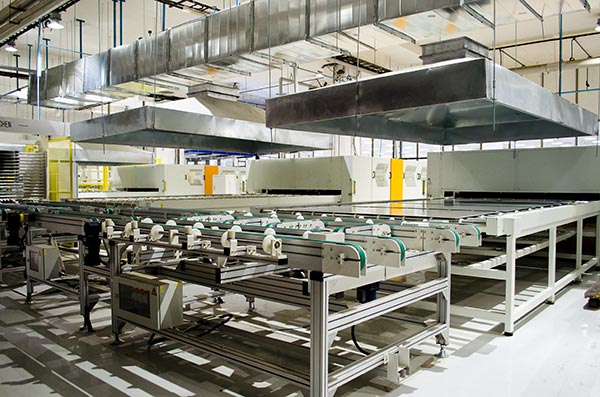To boost manufacturing in India, the Union Cabinet approved government thinktank NITI Aayog’s proposal to introduce the Production-Linked Incentive (PLI) scheme in several key sectors. The total outlay approved for these sectors is around INR 2 lakh crore, of which INR 22,600 crore has been assigned to clean technologies such as advanced battery cells and cutting-edge solar modules. This clear embrace of sunrise sectors is as historic as it is futuristic.
A clean economy, powered by clean technologies, has long been viewed as a niche subset of the real economy, surviving under the patronage of eco-warriors and a bucket full of state subsidies. At least, that is what we were told just a decade ago.
But the past decade has shown that clean technologies, including renewables, electric vehicles and LED lights, can not only survive without state subsidies but, over time, also upend existing paradigms, reduce energy prices and radically improve the ease of living.
Much can be inferred from recent events and market signals.
First, in August, the valuation of global e-vehicle giant Tesla reached $380 billion—more than that of the next 12 largest automakers combined. The spikes in valuations of clean-tech companies like Nikola and others clearly indicate the growing popularity of clean technologies among investors. In fact, the market is fishing for the next ‘Tesla’ across the clean-tech industry.
Second, ExxonMobil’s fall of the Dow Jones Industrial Average after nearly a century signals that the trend is only accelerating.
After the 2008-09 financial crisis, green measures accounted for 16% of the total stimulus globally. China’s enormous green stimulus post the 2008 financial crisis prepared the ground for its current performance in sunrise sectors such as electric mobility.
To recover from the impact of covid-19 and battle the impending threat of global warming, governments worldwide are making decisive investments and strategies for clean technologies. This has created a pipeline of growing demand for clean-tech components such as batteries, solar panels, and hydrogen electrolyzers.
Unfortunately, most of the clean-technology supply chain is concentrated in a few countries. International cooperation and leveraging each other’s strength based on mutual trust and the rule of law are crucial in these times of distress.
India has a unique role in building back better as the nation has a combination of factors in its favor. These include a growing and gargantuan appetite for energy, a sizeable local market, a government committed to a clean future and ease-of-doing-business, and fast-growing manufacturing advantages.
The government is walking the talk in clean energy deployment, which has helped set up an attractive local market for clean-tech manufacturers. India’s commitment to a cleaner energy mix has made it the fourth-largest renewable energy market globally in terms of installed RE capacity. Today, India’s renewables capacity, including hydro, stands at over 130 GW.
As far as meeting the commitment under Paris Agreement NDC is concerned, the country has already achieved more than 33% of the non-fossil-fuel-based installed power capacity against the target of 40% by 2030.
At the UN’s Climate Action Summit in September 2019, the Prime Minister had announced the doubling of India’s non-fossil-fuel target to 450 GW of installed renewable energy capacity by 2030. This includes about 300 GW of solar, 140 GW wind, and 10 GW of biomass-based capacity. India has already achieved close to 95 GW, making it one of the top four renewable markets in the world.
The government’s efforts have been vindicated via investor sentiment, which remained strong even during the lockdown, leading to record low tariffs. India has also been averaging an US$11 billion investment flow into the renewable energy sector for the last five years, according to CEEW. With the rapid decline in renewable energy prices, this investment is now resulting in more and more capacity deployed.
India recognizes that clean-technology manufacturing is a high-tech proposition where global scales and consistent innovations are critical. That is why the PLI scheme with INR 18,100 crore ($2.4 billion) for battery giga-factory and INR 4500 crore ($600 million) for solar PV is focusing on cutting-edge technologies and global scales.
Incentives will attract local and global champions to come together and anchor the clean-tech manufacturing ecosystem in the country. This will catalyze an ecosystem of component suppliers, R&D centers of excellence and equipment makers. The Central incentives are envisaged to be supplemented by state-level interventions like manufacturing parks, single-window clearance regimes, and other incentives.
Societies advance when scientific breakthroughs open up a new world of possibilities. That can only happen when we embrace cutting-edge technologies and give voice to disruptive outliers. The INR 22,600-crore allocation for clean technologies is envisaged to do just that. The PLI schemes in batteries and solar will help India graduate from a passive recipient to an active driver in the global clean-tech story, which fortunately for us is just beginning to take shape.
The views and opinions expressed in this article are the author’s own, and do not necessarily reflect those held by pv magazine.
This content is protected by copyright and may not be reused. If you want to cooperate with us and would like to reuse some of our content, please contact: editors@pv-magazine.com.








By submitting this form you agree to pv magazine using your data for the purposes of publishing your comment.
Your personal data will only be disclosed or otherwise transmitted to third parties for the purposes of spam filtering or if this is necessary for technical maintenance of the website. Any other transfer to third parties will not take place unless this is justified on the basis of applicable data protection regulations or if pv magazine is legally obliged to do so.
You may revoke this consent at any time with effect for the future, in which case your personal data will be deleted immediately. Otherwise, your data will be deleted if pv magazine has processed your request or the purpose of data storage is fulfilled.
Further information on data privacy can be found in our Data Protection Policy.